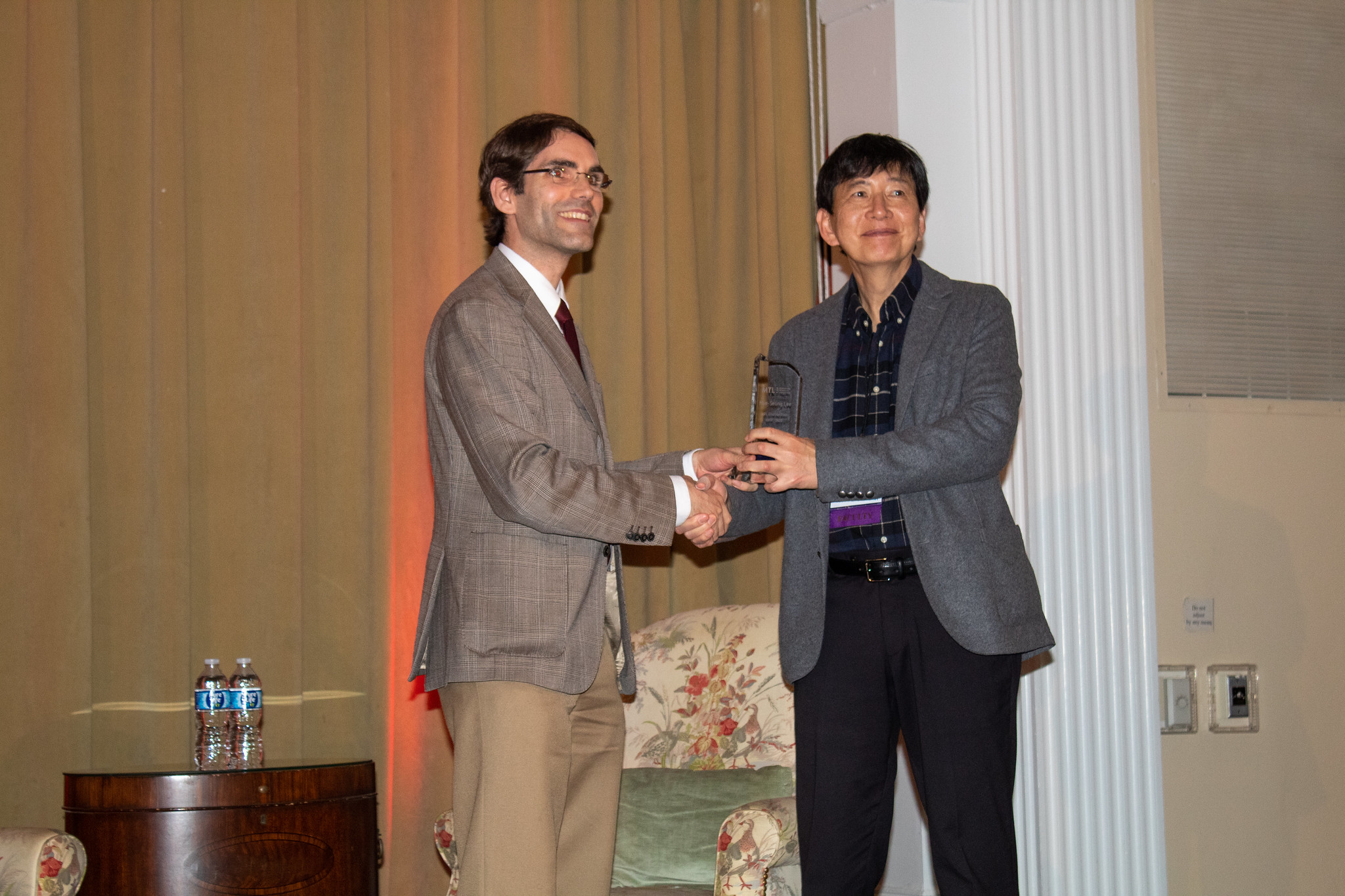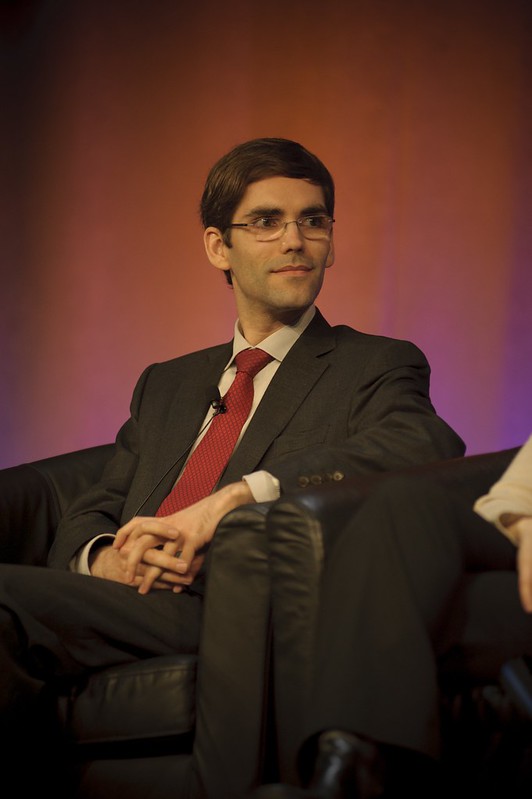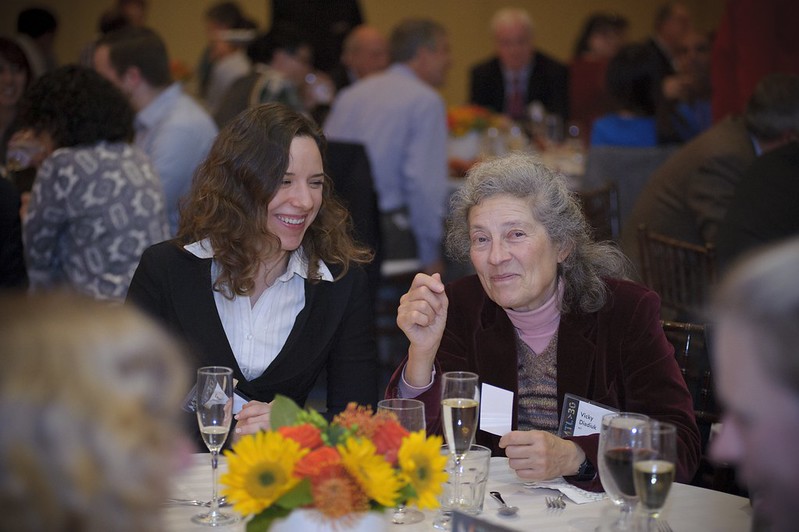Agenda
November 20, 2024
9:00 - 9:30 | Welcome Remarks
Tomás Palacios, MTL Director, Clarence J. Lebel Prof. in EE
Rafael Reif, President Emeritus and Professor of EECS
Anantha Chandrakasan, Dean of MIT's School of Engineering, MIT's Chief Innovation & Strategy Officer & Vannevar Bush Prof. of EECS
9:30 - 10:00 | MTL at 40: Semiconductors, Microsystems and Workforce Development for the Next Technology Revolution – Tomás Palacios
10:00 - 10:40 | Panel Discussion: The Making of MTL - Community, Impact and Industry Partnership through Semiconductors and Microsystems
(Jesús del Alamo, moderator)
Dimitri Antoniadis, Founding Director of MTL, Ray & Maria Stata Prof. of EE
Rafael Reif, President Emeritus and Professor of EECS
Ray Stata, Co-Founder of Analog Devices, Inc.
Vladimir Bulović, Founding Director of MIT.nano, Fariborz Maseeh (1990) Professor of Emerging Technology
10:40 - 11:00 | Networking Break / Startup Showcase / Demos
11:00 - 12:40 | New Directions for the Future of Microsystems
(Morning Concurrent Tracks)




Concurrent Track 4 - Healthcare
11:00 AM | Waves, Bits, and Molecules Lab at MIT
Ahmad Bahai
Professor of the Practice, MIT
Chief Technology Officer, Texas Instruments
Director, TI Kilby Lab
Recent innovations in semiconductor technology and biochemistry have brought about opportunities for realizing the long sought-after dream of personalized care. Periodic clinical-quality readings of biomarkers and vital signs provide the data needed to build a digital twin of one’s biological profile based on an AI-generated model. The digital twin will be a powerful tool for prevention, diagnosis, prognosis as well as therapeutic plans. The “Waves, Bits, and Molecules”” lab at MIT envisions transformational improvements in healthcare and life quality through innovations in advanced technologies at the intersection of semiconductor technology, biochemistry, and machine learning. In this talk, we review innovative semiconductor technologies such as electrochemical, Ultrasonic, photoacoustic, RF, and magnetic sensors and nanoactuators, which can transform the future of personalized diagnostics and treatments.
11:20 AM | Machine-Learning-Guided Quality Control of CAR-T Therapy Product Using Microfluidic Biophysical Cytometry
Jongyoon Han
Professor, MIT Department of Electrical Engineering & Computer Science
Professor, MIT Biological Engineering
Chimeric Antigen Receptor (CAR) T cell therapy has revolutionized cancer care, yet its manufacturing remains challenging due to variability in quality and efficacy. In this talk we introduce a novel microfluidic, label-free cellular biophysical profiling assay that rapidly assesses the functional phenotypes of CAR T cells. Our assay leverages biophysical features such as cell size and deformability to directly correlate with critical functional attributes, including the CD4:CD8 ratio, effector and central memory subtypes, and killing potency. Validated through extensive longitudinal studies across multiple CAR T batches from different donors and culture platforms, this method requires fewer than 10,000 cells and completes profiling within 10 minutes. The assay provides an efficient means to predict CAR T cell quality at critical manufacturing stages, thereby potentially reducing batch failure rates and enhancing therapeutic consistency.11:0 AM | Networking Break
12:00 PM | Neural Computation Underlying Behavior
Mark Harnett
Associate Professor, MIT Department of Brain and Cognitive Sciences
Investigator, McGovern Institute for Brain Research
The thousands of inputs a single neuronal cell receives can interact in complex ways that depend on their spatial arrangement and on the biophysical properties of their respective dendrites. For example, operations such as coincidence detection, pattern recognition, input comparison, and simple logical functions can be carried out locally within and across individual branches of a dendritic tree. In this talk, we will present the hypothesis that the brain leverages these fundamental integrative operations within dendrites to increase the processing power and efficiency of neural computation. We will focus on sensory processing and spatial navigation, with the goal of understanding the mechanistic basis of these brain functions.
12:20 PM | Bioelectronics for Brain and Body
Polina Anikeeva
Professor, MIT Materials Science and Engineering
Professor, MIT Brain and Cognitive Sciences
Solid-state electronic devices and biological systems exhibit drastically disparate materials properties. While semiconductor devices are often hard, brittle, and bound to flat wafers, biological electronics, such as our nervous system, are soft, mobile, and three-dimensional. Our group bridges this material divide between synthetic and biological electronics by creating multifunctional fibers capable of minimally-invasive interfacing with the organs while integrating advanced sensing and stimulation capabilities. This talk will highlight the development and applications of multifunctional fibers to recording and modulation of neural activity in the brain and in the gastrointestinal tract in behaving subjects. Finally, it will demonstrate how bioelectronic devices can be applied to uncover neural circuits underlying gut-brain communication, paving the way to future gut-centric therapies for neurological and psychiatric disorders.
Concurrent Track 5 - Artificial Intelligence
11:00 AM | Analog Brain-Inspired Computing
Bilge Yildiz
Breene M. Kerr (1951) Professor, MIT Department of Materials Science and Engineering
Professor of Nuclear Science and Engineering
Physical neural networks made of analog resistive switching processors are promising platforms for analog computing and for emulating biological synapses. State-of-the-art resistive switches rely on either conductive filament formation or phase change. These processes suffer from poor reproducibility or high energy consumption, respectively. Our work, on one hand, focuses on understanding and controlling the variability of the conductive filament formation in insulating oxide materials. On the other hand, we are innovating alternative synapse designs that rely on a deterministic charge-controlled mechanism, modulated electrochemically in a solid state, and that consists of shuffling the smallest cation, the proton. As typical throughout our research, here, too, we combine experimental synthesis, fabrication, and characterization with first principles-based computational modeling to gain a deep understanding and control of these promising devices.
11:20 AM | The Road to Digital Twins in Semiconductor Manufacturing
Duane Boning
MIT vice provost for international activities (VPIA)
Associate Director, Microsystems Technology Laboratories
Clarence J. LeBel Professor, MIT Department of Electrical Engineering and Computer Science
11:40 AM | Networking Break
12:00 PM | Is AI Ready to Transform Chemistry and Materials Science?
Rafael Gomez-Bombarelli
Jeffrey Cheah Career Development Chair
Associate Professor, MIT Department of Materials Science and Engineering
AI’s influence is undeniable in the digital realm, affecting consumers’ lives and corporate operations. Transferring these advancements to sectors producing physical goods, such as drug discovery and biotech, commodity chemicals, materials for energy and sustainability, and manufacturing, presents a thrilling prospect and a translational challenge. This talk will explore the present use cases and the potential of applying generative AI within the chemistry and materials domain. Unlike a large part of the tech sector, these industries are capital-intensive and cautious, meaning that AI must bridge an “execution gap” between the digital and physical realms for value generation. We will outline strategies to overcome current technical and cultural hurdles.
12:20 PM | Efficient Multi-modal LLM on the Edge
Song Han
Associate Professor, MIT Department of Electrical Engineering & Computer Science
This talk presents efficient multi-modal LLM innovations with algorithm and system co-design. I’ll first present VILA, a visual language model deployable on the edge. It is capable of visual in-context learning, multi-image reasoning, video captioning and video QA. Followed by SmoothQuant and AWQ for LLM quantization, which enables VILA deployable on edge devices, bringing new capabilities for mobile vision applications. Second, I’ll present StreamingLLM, a KV cache optimization technique for long conversation and QUEST, leveraging sparsity for KV cache compression.
Concurrent Track 6 - Quantum 2.0
11:00 AM | Quantum Computing
William D. Oliver
Henry Ellis Warren (1894) Professor, MIT Department of Electrical Engineering & Computer Science,
Professor of Physics
Director, Center for Quantum Engineering
Associate Director, Research Laboratory of Electronics
Quantum computers are fundamentally different than conventional computers. They promise to address certain problems that are practically prohibitive and even impossible to solve using today’s supercomputers. The challenge is building one that is large enough to be useful. In this talk, we will provide an overview of contemporary quantum computing at an intuitive level, including the technology, the promise, the hype, and the challenges ahead associated with realizing useful quantum computers at scale.
11:20 AM | Compiling Machine Intelligence onto (Quantum) Optoelectronic Systems
Dirk Englund
Associate Professor, MIT Department of Electrical Engineering and Computer Science
The world of quantum mechanics holds enormous potential to address unsolved problems in communications, computation, precision measurements, and machine learning/AI. Dr. Englund's QP-Group at MIT pursues experimental and theoretical research towards machine learning hardware and critical quantum technologies (computing, networking, sensing) by precision control of photons and atomic systems, combining techniques from atomic physics, optoelectronics, and modern semiconductor devices. In this talk, Dr. Englund will share some of the latest research conducted by his group at MIT and their potential applications.
12:00 PM | Engineering at the Limits of the Nanoscale
Farnaz Niroui
Associate Professor, MIT Department of Electrical Engineering & Computer Science
Engineering matter, with near-atomic control, is core to designing the emergent properties that help drive today’s technology frontiers in computing, sensing and information processing. However, realizing such precision engineering is challenged by the conventional fabrication strategies lacking the desired resolution and compatibility for the integration of unconventional nanomaterials and device designs. We address these limits by developing new engineering frameworks enabling down to atomic-scale control of materials and their heterogeneous integration into functional structures with designer properties for next-generation electronics, optoelectronics, and photonic quantum technologies, which will be discussed in this talk.
12:20 PM | Quantum Materials for Quantum 2.0
Pablo Jarillo-Herrero
Cecil and Ida Green Professor of Physics, MIT Department of Physics
The XXth century saw a revolution in science and technology, Quantum 1.0, largely triggered by our basic understanding of Quantum Mechanics, the physical theory of nature. Over the coming decades, a much more advanced technological revolution, Quantum 2.0, will make use of much more advanced concepts in quantum mechanics. In order to realize these technologies, new quantum materials are needed. These materials have often defied theoretical understanding, in some cases during decades. The discovery six years ago of correlated phases and superconductivity in magic angle twisted bilayer graphene has led to the emergence of a new materials platform to investigate quantum materials, namely moiré quantum matter. These systems exhibit a plethora of quantum phases, such as correlated insulators, superconductivity, magnetism, ferroelectricity, and more. In this talk, Jarillo-Herrero will review some of the recent advances in the field, focusing on the newest generation of moiré quantum systems, where correlated physics, superconductivity, and other fascinating phases can be studied with unprecedented tunability. He will conclude with an outlook of some exciting directions in this emerging field.
12:40 - 2:00 | Lunch / Industry Connections
2:00 - 2:45 | The Next Generation of MTL Leaders and Innovators
(Part 1)
Jeehwan Kim
Suraj Cheema
Joe Casamento
Jelena Notaros
2:45 - 3:15 | Networking Break / Startups / Demos
3:15 - 4:15 | Panel discussion: MTL's Impact in the Next 40 Years
(Hae-Seung Lee, moderator)
Thomas Lee, Stanford Univeristy
Susan Feindt, NATCAST
Jennifer Lloyd, ADI
Kenneth O., University of Texas, Dallas
Dario Gil, IBM
4:15 - 5:00 | The Next Generation of MTL Leaders and Innovators
(Part 2)
Kevin O'Brien
Sam Coday
Sixian You
Deblina Sarkar
6:00 - 9:00 | MTL 40th Reception & Dinner



